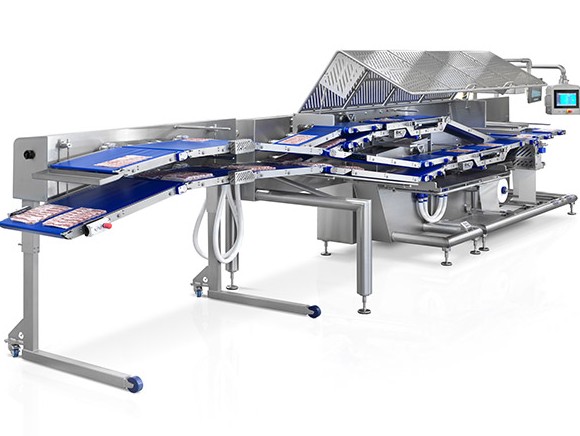
At Sleegers Technique BV they believe that standing still means going backwards, which is why they not only invest in developing new machines but also in improving existing models. The company is currently hard at work on the three innovations described below.
1. Preparing for new types of paper and film
One of Sleegers Technique BV’s specialisms is placing sheets of paper or film underneath carpaccio, other meat products or cheese slices. A sheet or film is placed neatly under each slice, and the slices can be either stacked on top of one another or offset. But it is also important to keep pace with advancements and to be prepared for a new generation of paper and film. Besides that, the method of slicing products is changing too, which is why the current machine types are being upgraded. This process is expected to be completed in 2018.
2. Higher speeds
A machine that can produce, underleave and stack 80 hamburgers per minute might sound impressive, but there is always room for improvement. Customers in North America want a faster throughput speed so that they can produce 400 hamburgers per minute. The Sleegers team is currently investigating whether and how this can be achieved without compromising on quality. After all, it is important to minimise the number of errors, even at high speed.
3. Automation for fish products
Although many activities in the fish industry are still performed manually, this sector is also expected to become more automated in the future. However, since fish is a lot fattier than other products it requires a different approach, such as using cameras which can precisely determine how big and how heavy a portion of fish may be. The techniques that Sleegers Technique BV has developed for meat and cheese, for example, can now also – with a few adaptations – be used for fish machines.
Source: © Sleegers Technique